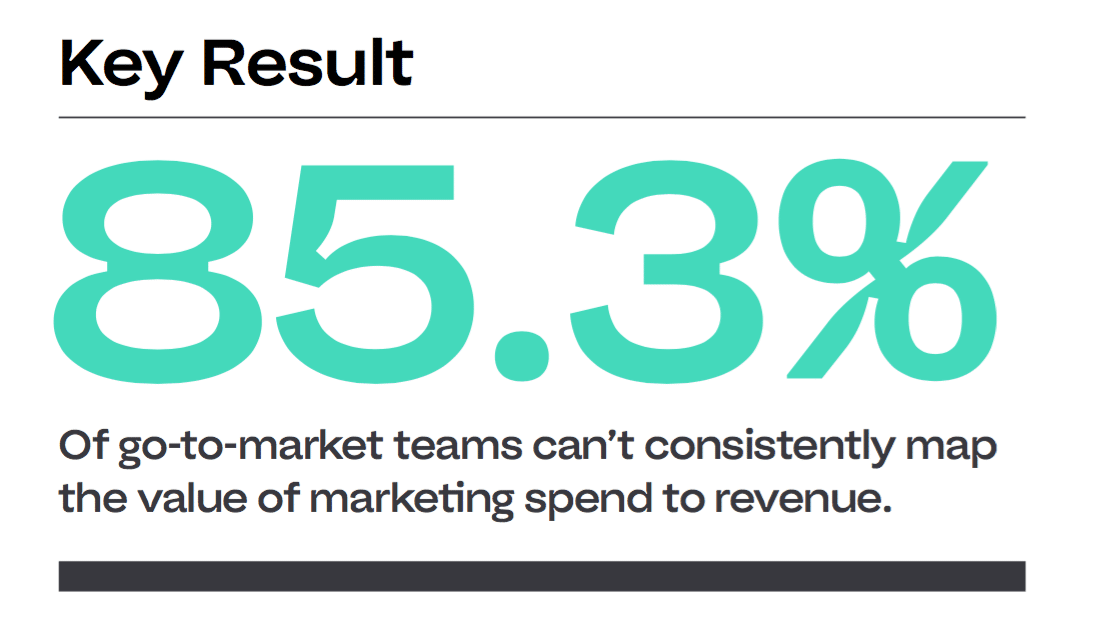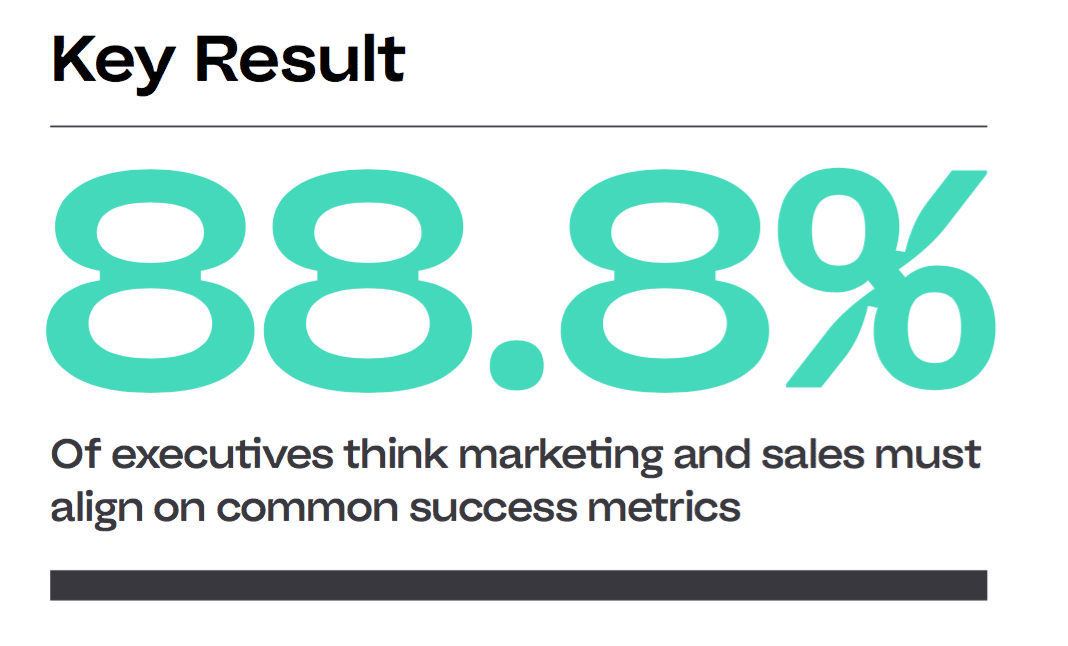Most B2B teams are still stuck on spreadsheets and held back by data silos, leading to chronic misalignment on what drives revenue. New research from business alignment firm Mperativ affirms the key reason why—a large majority of B2B execs are unable to consistently establish relationships between marketing activities and revenue outcomes.
The firm’s new Trends in Revenue Operations survey also shows that even with a burgeoning $345B global market for marketing technology and a boom in data about the customer journey, executives still often fly blind when it comes to the return on their marketing investments. Marketing leaders are relying on outdated tools like spreadsheets and are held back by data silos—stifling company-wide alignment on what’s working to drive growth.
The survey of more than 500 executives in marketing, sales, finance, revenue operations, and C-level roles in the U.S. underscores the severe pressure marketing teams face to quantify their contributions, but across organizations there’s a lack of technology, unified data, and overall strategy to allow them to do so. As a result, while a vast majority of businesses employ lead-centric marketing strategies and tactics, executives overwhelmingly prefer a new opportunity-centric approach that would more closely tie marketing efforts to the rest of the company.
“Data silos and the lead-centric marketing approach prevent alignment, causing the value of marketing to become unclear and often underestimated,” said Jim McHugh, Mperativ CEO and co-founder, in a news release. “Revenue operations teams continue to struggle with creating a unified front that brings sales, marketing and customer success all into the fold. In order to drive more definitive evidence of how marketing initiatives affect business outcomes, a new approach is needed.”
Revenue stakeholders are hamstrung by data silos and the inability to effectively communicate value of their initiatives
There is a clear gap in how revenue stakeholders across a company measure and communicate about the customer journey. This prevents marketing leaders from credibly communicating the direct cause and effect relationships between marketing activities and revenue outcomes, in a way that makes sense to their executive peers.
- 31 percent of respondents said marketing’s use of separate metrics from the rest of the businesses is what prevents their company from being able to clearly and consistently establish the direct cause and effect relationships between marketing activities and revenue outcomes
- 69 percent of respondents said different departments within their company (i.e., marketing, customer success, sales, finance) use different terms and metrics to describe the customer journey
- About half of respondents (48 percent) said their marketing and sales teams’ activities are only somewhat aligned for the purpose of identifying, engaging, qualifying and winning opportunities.
Lack of proper tools prevents alignment: manual data preparation in spreadsheets still the go-to method
B2B teams lack easy access to modern analytics tools for proper reporting. A majority (73.5 percent) of respondents still use spreadsheets to create alignment on-demand generation initiatives with revenue stakeholders in different departments such as sales, finance, and customer success. Over a third of respondents (34.8 percent) agree that there is a lot of room for improvement when asked if the tools and services their company uses for lead-centric marketing activities consistently result in high quality, viable sales opportunities.
- 45.9 percent of respondents are only somewhat satisfied with the tools and services their company uses to create alignments between marketing, sales, customer success and finance on how to optimize revenue generation
- Only 20 percent of finance executives say the tools and services their company uses consistently clearly establish the direct cause and effect relationship between marketing activities and revenue outcomes.
Executives agree: it’s past time for marketing and sales to align on success metrics
Almost all respondents (88.8 percent) believe that marketing and sales teams should align on the same set of success metrics and 76.3 percent think there must be a better way for their company’s marketing team to generate quality opportunities for sales.
“The disconnect between sales and marketing is nothing new, but closing the gap by centering around common success metrics is becoming more important than ever,” continued McHugh. “As both teams become more driven by data and technology, having the same measurable goals is the only way to ensure they build out unified operations.”
A shift from lead-centric to opportunity-centric revenue initiatives is preferred
While a majority of respondents currently employ lead-centric marketing strategies and tactics (80.6 percent), 74.9 percent of respondents believe marketing should shift from lead-centric marketing (identifying qualified leads for sales) to opportunity-based marketing (identifying qualified opportunities for sales). Non-marketers agree—74.4 percent saying marketing should shift from lead-centric marketing to opportunity-based marketing.
- 41.4 percent of respondents reported that a shortcoming of the lead-centric approach to marketing is how “opportunities are usually created with just a single person associated with them”
- 22.4 percent of respondents say lead-centric metrics do not paint a complete and accurate picture of how marketing does/does not contribute to how revenue is generated at their company
- 22.7 percent of respondents are not confident in the accuracy of the metrics marketing uses to articulate their contributions to generating revenue.












